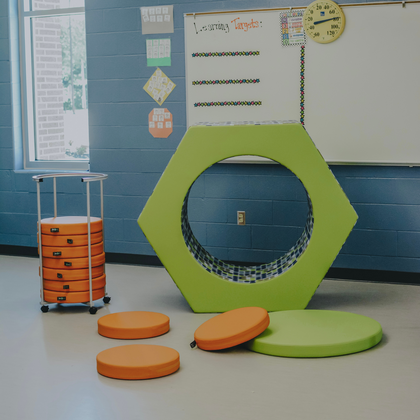Loading...

Designing for Neurodiversity
David Jakes
If you have ever taught, you are aware of the challenges of preparing a learning experience for 25-30 (and sometimes more) students who all learn differently, who possess different skills, who have different levels of motivation and interest, and who come from a variety of families and backgrounds. When I reflect on my experience as a teacher, I tried to develop equitable learning experiences, but it was often too easy to fall into a one-size-fits-all lesson design that ignored the unique needs that many of my students had.
As you might imagine, it's an extremely complex process to create effective learning experiences for a diverse population of students. Doing so requires a thoughtful application of the art and science of education. To be truly effective, teachers must focus on designing learning experiences that are respectful of the unique capabilities of each student, including those that are considered neurodiverse.
Neurodiversity “describes the idea that people experience and interact with the world around them in many different ways; there is no one "right" way of thinking, learning, and behaving, and differences are not viewed as deficits.”
No two brains are alike, so it is impossible to characterize normal brain function. But there are people who are impacted by how their brain works, causing a variety of disabilities (autism, ADHD, dyslexia) while sometimes resulting in unique abilities, such as enhanced memory and problem-solving capabilities.
So it’s imperative that teachers and schools avoid a one-size-fits-all approach to how they serve students.
This applies equally to how spaces are designed. The one-size-fits-all classroom, with its rows of desks, and uncomfortable chairs, directed towards the “front of the room” with the teacher's desk and display do little to respect the conditions for learning that a diverse population requires. Many current learning environments ignore the need for supporting a diversity of individuals, including those that have significant differences in brain development. As educational professionals, we can do better.
As you might imagine, there are strategies for designing for neurodiversity. These include:
- Creating spaces that encourage movement and activity.
- Enabling sensory comfort (focusing on adjustable lighting and proper acoustics).
- Creating comfortable spaces that students enjoy.
- Using color intentionally, while avoiding bright colors that can become a distraction.
- Employing a range of spaces that support choice and different ways to engage.
- Using wayfinding techniques to create a welcoming invitation and to support the ease of navigation through space.
- Applying biophilic design elements that connect students to the calming effects of the natural world.
To design differently, schools should focus on designing spaces to support individuals that range from neurotypical to neurodivergent. A worthy goal is to create safe spaces (emotional, physical, intellectual) that recognize individuality while promoting inclusion and acceptance - with the overall goal of creating a cohesive school community. To accomplish this, a heightened sensitivity for an inclusive design that addresses neurodiversity should be an emphasis when considering the design of learning spaces in schools. Your Fōmcore representative can show you how soft seating can meet the needs of a diverse school population and contribute to learning spaces that make a difference for all students.
“Space can help remove barriers; it can improve culture and attitudes; it can help remove stigmas and it can increase choice enabling people to be successful.”